
Longread
Applying a food system approach: the key to Zero Hunger in 2030
Increasing food production is not in itself the solution to eliminating hunger and malnutrition worldwide. So how can we best achieve the Zero Hunger sustainable development goal by 2030? A major research programme at Wageningen University & Research aims to ensure sufficient healthy food for everyone in 2030, while also taking into account people’s wellbeing, the economy and the environment.
It is now five years since the United Nations pledged to eliminate hunger and malnutrition worldwide by 2030. The Netherlands has pledged to make a substantial contribution to achieving ‘Zero Hunger’, the second of the United Nations Sustainable Development Goals.
While food production is at a sufficient level, it must also be diversified, affordable and accessible if it is to contribute to a healthy diet.
The policy memorandum ‘Investing in Perspectives’ published by the Dutch Minister for Foreign Trade and Development, Sigrid Kaag, confirms the ambition to permanently ensure that at least 32 million people no longer suffer from malnutrition. This is by no means an easy task, not least because the number of malnourished people has actually been increasing in recent years, following a period of gradual decline. According to the UN, some 821 million people are currently estimated to be suffering from malnutrition.
Hunger
Complex issue
Producing more food is not the silver bullet, according to Ivo Demmers of Wageningen University & Research, as the hunger issue is way too complex. “Although production is currently at a sufficient level in terms of the amount of cereals needed globally, food must also be diversified, affordable and accessible if it is to contribute to a healthy diet. Ensuring sufficient healthy food in the future means we also have to take into account the impact of its production on the environment. The challenge is further complicated by increasing pressure on the available land and the accessibility of water and nutrients for agriculture. The pressure increases are caused by a range of factors, including climate change, population growth and a decline in biodiversity.”

Demmers says that the key is to consider food systems as a whole and fully map the range of possible effects of any measures. He leads the ‘Food Security and Valuing Water’ research programme, which aims to contribute to the UN’s Zero Hunger goal by combining knowledge from the agrifood and water domains. “The strength of the food systems approach we have applied is that it records the various elements in a food system and the mutual relationships involved. It considers all activities related to production, processing, distribution and the use of food on the one hand, then examines the outcomes of these activities on the other. Specifically, it addresses the questions: What are the consequences for food security and the nutritional value of the daily diet? What do the activities mean for farmer incomes and employment? And what is the impact on biodiversity in the region and on the climate? This research programme gives us scientific insights and practical knowledge for applying the food systems approach in various situations, after which we can use this knowledge in studies for companies, banks, governments and non- governmental organisations.”
Food production
- Production is currently at a sufficient level in terms of the amount of cereals needed globally. “When food systems meet sustainability – Current narratives and implications for actions". Béné, C. et al, 2018.
- To secure food for nearly 10 billion people by 2050, agricultural production has to increase by 50% on average, in Sub Saharan Africa and South East Asia production has to double (FAO, 2017)
- The 2018 drought in Europe resulted in the lowest grain production since 2012. (EU, Short-term outlook for EU agricultural markets in 2018 and 2019)
Four narratives on the inability to reach food security

A food system approach includes the value chain, supporting activities, external drivers and links to the outcomes of the food system. In the figure below, the approach is presented by four narratives on inability to reach food security:
Focus on water
The research programme has a strong focus on the value of water for food production. The fresh water required to produce food is scarce and some 70 per cent of all available water is already being directly used in agriculture. One of the greatest challenges the world faces is to ensure sufficient, good-quality fresh water. The effects of development and climate change are everywhere, with the delta regions being especially vulnerable due to a combination of factors. Catharien Terwisscha van Scheltinga is leading the ‘Deltas Under Pressure’ sub-project, which focuses on Bangladesh and the Mekong delta in Vietnam. “These regions are facing rising sea levels, salinisation and soil subsidence as well as flooding and periods of drought,” she explains. “Agricultural production is no longer self-evident in these areas due to this combination of factors.”
Water
- 97 percent of the world’s water is salt water.
- Less than 1 percent of all fresh water is available to mankind, of which 70 percent is being used for agriculture.
Terwisscha van Scheltinga and her colleagues are mapping the bottlenecks in the food systems of both deltas in detail. The challenges differ significantly between the two regions. For instance, rice farmers in parts of Bangladesh are facing drought while farmers in the south are impacted by the salt water along the coast. At the same time, shrimp fishermen in the same area are benefitting from the salt water. “There is no single super-solution for all problems and we have to ensure that measures which solve one problem do not exacerbate another. This is why we try to include all the links in the system. In the Mekong delta we’re starting bottom-up with farmers at the local level. Bangladesh has a national Delta Plan in place to which Wageningen University & Research contributed. We are therefore making this the starting point for new plans to increase the resistance of agriculture to climate change.”
We are curious about the opportunities that seaweed production offers for increasing the sustainability of shrimp and fish production
Food from the oceans
The scientists in the ‘Aquatic Systems’ sub-project hope to show that while salt water can be a threat to the food supply in deltas and coastal regions, it also offers opportunities. Dolfi Debrot is leader of this project, which focuses on sustainable food production from the ocean. “Food production competes with other functions on land and the quality of agricultural land is declining at a rapid rate. Our project studies the opportunities for producing food in the oceans while bearing in mind that most of the world’s fish stock has already been intensively utilised. This is why we are focusing on the production of seaweed, which has potential for a variety of reasons. It doesn’t use scarce land and nor does it require fertilisation, making seaweed an interesting crop for farmers. What’s more, it is very healthy for people and animals alike.”
The research is being carried out in Indonesia, a country with a wide diversity of economic, ecological and environmental conditions as well as a strong variation in local customs. This makes it easier to map the effect of different factors on the development of seaweed production. Moreover, says Debrot, seaweed is already being grown in many locations around Indonesia.

“Some farmers focus exclusively on the production of seaweed, while others combine it with shrimp or fish farming. We are curious about the opportunities that seaweed production offers for increasing the sustainability of shrimp and fish production. In the past, mangroves were felled on a large scale in Indonesia to make space for farming shrimps for export. To make matters worse, huge amounts of pesticides, antibiotics and supplements have been used. The result is a completely destroyed ecosystem, with vast areas of shrimp farms along the coasts of Indonesia now just sitting there abandoned.”
Growing population, lower yields
Other issues are at play in rural Africa. The Ugandan district of Arua is representative of many other rural regions: strong population growth in an area where agriculture is largely self-sufficient and the yields low. Farmers use little external input, such as enhanced seed material, artificial fertiliser and crop protection products, and there is hardly any mechanisation.
At the same time, the region is currently facing an influx of thousands of refugees from South Sudan who are often given food aid to meet their daily needs. As scientist Huib Hengsdijk explains, the Ugandan government is looking to convert this type of assistance into a cash-for-food system: “The plan is to provide refugees with financial support so they can purchase their own food on the market. As Arua is isolated on the west side of the Nile and lacking any proper infrastructure, however, the refugee settlements are located a long distance from any markets. It is also far from certain that the local markets can supply the growing demand for food without this resulting in substantial price increases. Moreover, the population in the capital of Kampala is increasingly dependent on the food from rural areas, while production there is not even sufficient to fulfil local demands.”
In the ‘Rural Areas in East-Africa’ sub-project, Hengsdijk and his research team apply a food systems approach to gain a better understanding of the system in Arua and two Ethiopian regions. The goal is to improve food security in rural areas. “Circumstances in the chosen focal areas vary. Ethiopia is politically unstable, for instance, while Uganda is currently peaceful. But such an influx of large numbers of refugees can rapidly change the situation. The agricultural conditions in Uganda are largely good, while Ethiopia is known for its droughts, even though there are wetter regions as well.
“We are currently developing various scenarios for each region. One of the things being studied is whether a region can produce sufficient food for a healthy diet in the future in view of population growth and climate change. We also look at the effects of extra land use and intensification on the environment and nature. And we want to know how the demand for energy can be met so that people can prepare food.”
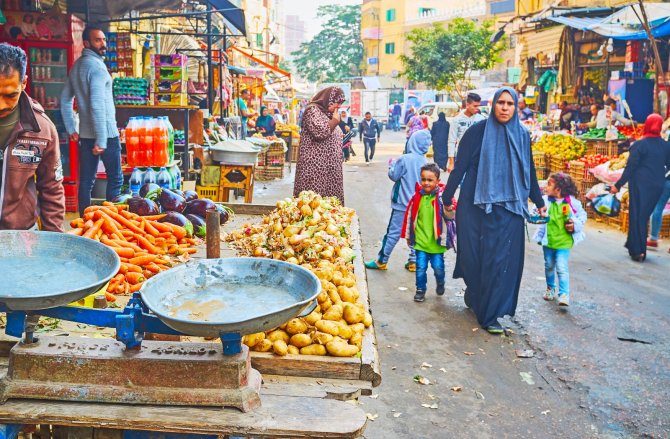
Cities growing due to migration
Linked with the rural regions of Africa and Asia are the food systems in urban areas, including in informal settlements. Robust and sustainable food systems are needed to take account of the complex relationships between rural and urban environments; rapidly expanding cities require solutions in order to supply the population with sufficient healthy food and combat malnutrition and obesity. This is the focal point of the ‘Feeding Cities and Migration Settlements’ sub-project, led by Katrine Soma. “We are zooming in on Dhaka in Bangladesh, Kampala in Uganda and Nairobi in Kenya, three cities that are representative of others in developing countries as they are growing fast due to migration. To feed the population, we are using the food systems approach to discover the most urgent bottlenecks for each of the cities. Once these have been identified we can work with local parties to see which interventions are feasible to improve food availability and human wellbeing.”
Once all stakeholders agree with the problem analysis, we can start to discuss interventions that can improve the present food system
A shared characteristic of the three cities is the way people are arriving from rural regions in search of a better future. Many end up in so-called informal settlements such as Kibera, a part of Nairobi and the second largest of its kind in Africa. Settlement residents struggle with a lack of work, opportunities and money, with very limited access to healthy food and proper sanitary facilities.
Pollution is a major problem too, partly because many poor migrants use charcoal to prepare food in the densely populated settlement. “A further challenge is that the food often has very little nutritional value,” adds Soma. “This is because the quality of the food products has been diminished during transportation from the rural regions. Issues like this serve as our basis for further analysis.
Once all stakeholders agree with the problem analysis, we can start cooperating with local governments, businesses, aid organisations and residents to discuss interventions that can improve the present food system. Relevant solutions are identified in close cooperation with local people. In Kibera, for instance, this includes opportunities for low-cost (even free) cooling and improved transport of fish from rural areas, supply of low priced small fish with high-quality fish from other areas, low-cost technologies for water harvesting and green energy, and capacity building.”
- Unfortunately, your cookie settings do not allow videos to be displayed. - check your settings
To really understand the food system, we need insight into how the society works and how local knowledge can be used to encourage different behaviours, Soma explains. “The government did try building flats outside the settlement for the temporary residents of Kibera several years ago but this was a failure as the social structures weren’t taken into account. For instance, people depend on their neighbours to survive and found it difficult to suddenly undertake all sorts of administrative actions which they did not understand.”
This situation highlights the importance of linking ‘technical’ solutions to socio-economic factors, Soma adds. “It complicates matters but is valuable for making new developments in informal settlements possible in the future.”
Zooming in, zooming out
When looking at a food system you can distinguish between various scale levels: from a farmer’s yard to the global food market, and every link in-between. Translating scientific data related to one level to that of another requires ‘adapters’: models which connect individual blocks of knowledge to make the data from one applicable to another. This is the task of Geerten Hengeveld, who heads the ‘Multiple Scales and Extreme Events’ research sub-programme. Hengeveld and his colleagues bring together data on the food system in two focal areas, namely India/Bangladesh and Ethiopia.
The goal is to be able to predict how a food system will respond to extreme events
“The benefit of Ethiopia is that the country already has good surveys that give a solid insight into the situation of households and the availability of food. These surveys provide a number of parameters that can be used to make calculations in an international trade model. Say that Ethiopia wants to increase food yields by investing in irrigation; one would have to be able to predict how much irrigation would actually yield. And there are many factors at play. What does it mean for the availability of water when every farmer invests in a water pump and solar panel for his field? Do farmers even want to make such investments? And what would it entail for logistics? Because even if you succeed in tripling production, farmers will still encounter supply problems when they bring their produce to market by moped. All these types of data are required to zoom in and out on the effects of an intervention.”
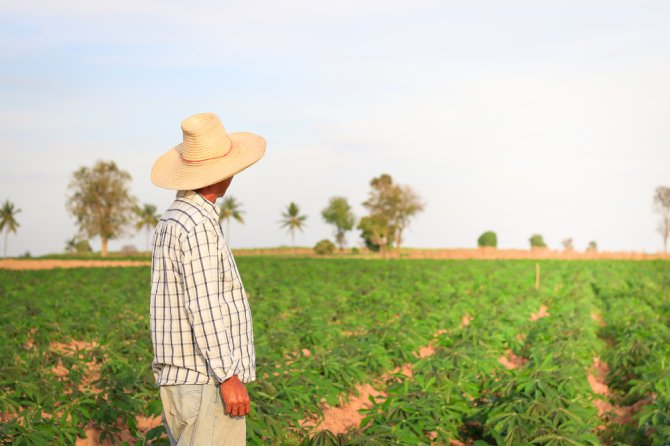
The scaling methods that are being developed in the project can be applied in other sub-projects in different regions too. This also holds true for a stress test developed to map the resilience of food systems to extreme events. Hengeveld: “We have indicators that tell us in advance how stable a system is, but we don’t know whether they are reliable. This is why we’re developing new models for several types of food systems and linking them to extreme events such as trade wars or hurricanes. The goal is to be able to predict how a food system will respond. What happens when Russia decides to stop importing fruit from the EU? How will cassava farmers in Ethiopia be affected when the USA decides to dump grain on the market? There are a number of vulnerabilities this may bring to light, either related to food production itself or issues such as logistics and consumption.”
Nature-based solutions for climate-proof and circular food systems
Part of the research programme is the ‘Nature-based solutions’ sub-project, led by Annemarie Groot and Jeroen Veraart, which focuses on solutions for making food systems more resilient against climate change and more circular at the same time. “Nature-based solutions are often linked to climate adaptation in urban environments or to water safety,” says Groot. “Much less is known about how nature-based solutions can contribute to food security and a greater biodiversity at the same time.”
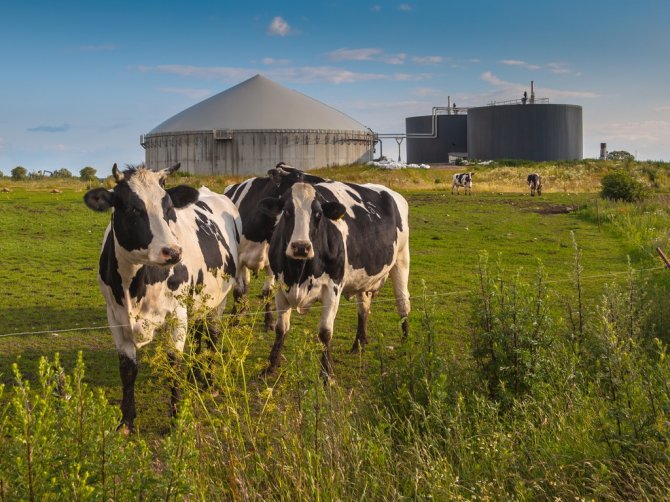
Groot explains that the scientists in the team are working on two overarching case studies: “The first looks at nature-based solutions driven by the principle of diversity in order to make food systems more resilient to the effects of climate change. In the Netherlands we are looking at various types of crop diversification aimed at making food systems more resilient. This includes food forests, agro-forestry and mixed cultivation. We are initially trying to find out what we do and don’t know and which parties are struggling in practice. In India, we are studying the specific effect of a more diverse diet for cattle, in which cows are fed various herbs in addition to grass. There are indications that a herb-rich diet reduces the levels of diarrhoea among cattle, a disease that will probably occur more often due to climate change.”
Climate
- Floods and coastal storms forced 18.8 million people to leave their living environment in 2017. (World Economic Forum: The global risk report 2019).
- Global crop and economic models projected a 1–29% cereal price increase in 2050 due to climate change. (3)
The second overarching study focuses on the efficient use of water – both waste and rain water. “The agricultural sector in the Dutch province of Zeeland is facing increasing fresh water shortages as a result of climate related risks such as drought and salinisation. At the same time there are many companies, which produce waste water. Researchers will map the supply and demand for waste water of a certain quality. Later in the project we’ll be looking at which nature-based solutions can be used to treat waste water in a way that meets the requirements of agricultural producers. This may involve using methods such as micro-organisms or solar energy to purify the waste water in a natural way. In Ghana, we are working with stakeholders to analyse the where and when of water excesses and water shortages. We hope to discover where nature-based solutions might be a possibility for supplying sufficient water to crops at times of drought during the growing season. Think of options like reforestation, which would allow the soil to retain more water, or irrigation with rain water harvested during the wet season.”
Biodiversity can make a direct contribution to a more resilient food system
The team is studying various types of nature-based solutions: those that intrinsically use the power of nature on the one hand, and solutions ‘inspired by nature’ on the other. Groot: “The use of herbs in the diet of cattle in India or mixed cultivation in the Netherlands are examples of intrinsic nature-based solutions that could enhance the climate resilience of food systems. Making waste water usable as a source for agriculture and horticulture via solar and wind energy in Zeeland is more of an ‘inspired by nature’ solution. Both types have plenty of potential.”
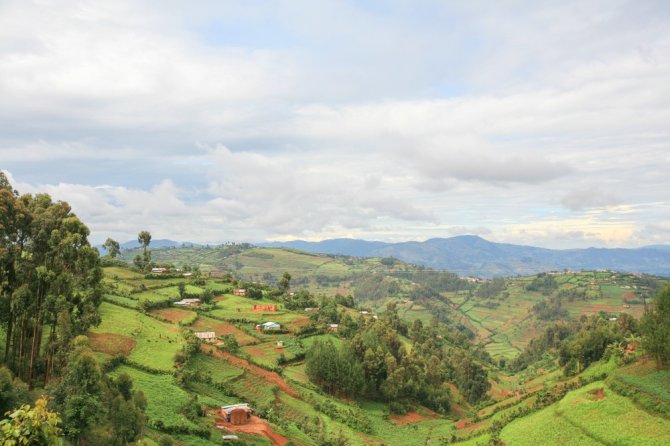
Biodiversity increases resilience
Another example is ‘Food and Biodiversity’ led by Eric Arets. His team is looking for solutions that are favourable for biodiversity and contribute to a more resilient food system. “Biodiversity can make a direct contribution to a more resilient food system, such as in tropical countries where wild nature is still an important basis for the food supply. In addition, a high level of biodiversity makes food systems less vulnerable to external influences like climate change and disease. A system in which wild or semi-wild resources are still being used, such as coffee and sugar in East Africa, has varieties that are more resistant to factors like rain or cold than other varieties. Lose that diversity and the basis for the food system disappears when climate conditions change.”
Biodiversity
- There are about 8 million animals and plant species world wide, 1 million of them face extinction. (1)
- This loss of diversity, including genetic diversity, poses a serious risk to global food security by undermining the resilience of many agricultural systems to threats such as pests, pathogens and climate change. (1)
- 7155 local breeds of livestock are still in existence. Diversity in livestock enables raising of livestock in various (changing) environments. However, 27% of these breeds are at risk of extinction. Only 8% are not at risk. (2)
Arets’ group is working on an assessment framework in which the interaction between biodiversity and elements of the food system are qualified and quantified. By gaining insight into how choices for specific measures work out, both locally and across the entire food system, policy makers are able to make well-thought-out decisions. A choice for increased sustainability may involve switching to an organic agricultural system, for example. “Such a choice would generally be beneficial for biodiversity and make the agricultural system more resilient as the adjacent nature is less affected by pesticides and fertiliser,” Arets explains. “There will be more natural pollinators and the water will be better regulated which, in the long term, may lead to less negative effects and higher production. In the short term, regular agriculture is generally more productive. A transition to organic agriculture may mean that you need more acreage to produce the same amount of product. This way, it may have an effect on biodiversity and food production locally and worldwide. Depending on the effects and interactions at various scale levels and timeframes, the balance for biodiversity and food production can go either way. The goal is to create the most comprehensive image possible of the expected effects and, in doing so, improve the decision-making process.”
COVID19 and Food Systems – increasing resilience
The COVID-19 pandemic raises attention for many important challenges for agri-food systems in different parts of the world. It is still rather unclear, however, whether this will lead to accelerated structural changes or a marginal adaptation to a “new normal”. Potential changes include a reset in the balance between local, regional and global food systems, with more focus on trade, national food security and urban-rural interactions. Also the relation between food systems and health is likely to become more important: this includes the safety of agri-production systems and also includes food systems for healthy diets. On the other hand, some argue that COVID19 provides an excellent opportunity to incorporate climate mitigation and adaptation, biodiversity and sustainability and hence ‘building back better’ in responding to the crisis.
What is clear however, is that for this research programme, the COVID19 crisis will provide valuable insights on how Food Systems respond. These insights can be used to increase the resilience of Food Systems to shocks.
The best routes to Zero Hunger
With the ‘Food Security & Valuing Water’ research programme, Wageningen University & Research aims to work with policy makers, aid organisations, farmers and civilians to set out the best routes toward Zero Hunger in 2030. A group of scientists led by Marijke Dijkshoorn is laying the foundations for these pathways. “The transition to sustainable, robust food systems can only be realised with cooperation from all parties playing a role in said system. Each country or region has its own specific conditions and demands. The sub-projects in which our scientists are involved shape our method: we share our knowledge and refine our methods and tools. In the end, however, the real work has to be done by the stakeholders in the countries themselves.”
A food system approach brings sustainable, healthy and sufficient food for all one step closer
In a previous project Dijkshoorn supported the Dutch province of Overijssel in its route toward a sustainable food system in 2050. “Together with people from government authorities, social organisations, civilians and businesses we first determined what we hoped to achieve. We then shared insights into what would happen if we went right or left. For instance, how much food would be available; what does this mean for the emission of greenhouse gases; what are the economic effects; which political factors are involved; and what behavioural aspects should be taken into account. It is much easier to determine a course when you have such knowledge to hand.”
The distribution of roles in these types of trajectories is clear, Dijkshoorn underlines. “The stakeholders are the experts; we provide insight with data and models. And then, in the process, you see that insight results in behavioural changes as the stakeholders are aware of the consequences of specific choices. But they also see which steps can be immediately taken to reach the desired goal.”
No easy path
Zero Hunger in 2030 – there’s no easy way to get there, reiterates Ivo Demmers: “Every solution has multiple effects, including on various scale levels or time periods. A food system approach allows us to gain insight into the effects of decisions made by farmers, companies, policy makers and investors. It helps bring sustainable, healthy and sufficient food for all one step closer.”
Which food system approach is followed?
The food system approach describes the various elements in a food system and the relationship between them. It looks at all activities related to food production, processing, distribution and the use of food on the one hand, and the outcomes of these activities in terms of food security, nutritional value, income, employment, biodiversity and climate on the other.
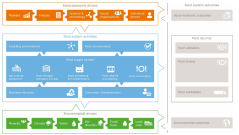
About the research
The ‘Food Security & Valuing Water’ research programme at Wageningen University contributes to achieving zero hunger worldwide. It involves around 80 scientists from various disciplines who contribute their knowledge in the field of agrifood and water. Together, they build routes that enable the transition to sustainable food systems worldwide, based on research carried out from Indonesia and Bangladesh to Uganda and Ethiopia, from river deltas to metropolitan cities.
Sources
- IPBES (2019): Summary for policymakers of the global assessment report on biodiversity and ecosystem services of the Intergovernmental Science-Policy Platform on Biodiversity and Ecosystem Services. S. Díaz, J. Settele, E. S. Brondízio E.S., H. T. Ngo, M. Guèze, J. Agard, A. Arneth, P. Balvanera, K. A. Brauman, S. H. M. Butchart, K. M. A. Chan, L. A. Garibaldi, K. Ichii, J. Liu, S. M. Subramanian, G. F. Midgley, P. Miloslavich, Z. Molnár, D. Obura, A. Pfaff, S. Polasky, A. Purvis, J. Razzaque, B. Reyers, R. Roy Chowdhury, Y. J. Shin, I. J. Visseren-Hamakers, K. J. Willis, and C. N. Zayas (eds.). IPBES secretariat, Bonn, Germany. 56 pages.
- FAO SDG Progress on SDG 2 (taken on 5 May 2020 from http://www.fao.org/sdg-progress-report/en/#sdg-2)
- (1) Mbow, C., C. Rosenzweig, L.G. Barioni, T.G. Benton, M. Herrero, M. Krishnapillai, E. Liwenga, P. Pradhan, M.G. Rivera-Ferre, T. Sapkota, F.N. Tubiello, Y. Xu, 2019: Food Security. In: Climate Change and Land: an IPCC special report on climate change, desertification, land degradation, sustainable land management, food security, and greenhouse gas fluxes in terrestrial ecosystems [P.R. Shukla, J. Skea, E. Calvo Buendia, V. Masson-Delmotte, H.-O. Pörtner, D.C. Roberts, P. Zhai, R. Slade, S. Connors, R. van Diemen, M. Ferrat, E. Haughey, S. Luz, S. Neogi, M. Pathak, J. Petzold, J. Portugal Pereira, P. Vyas, E. Huntley, K. Kissick, M. Belkacemi, J. Malley, (eds.)].